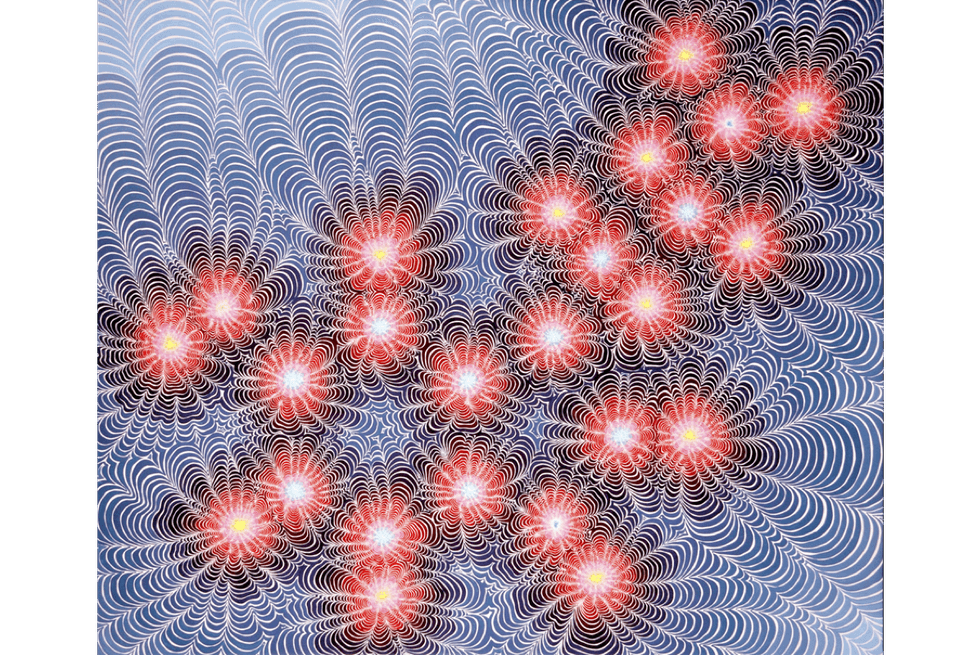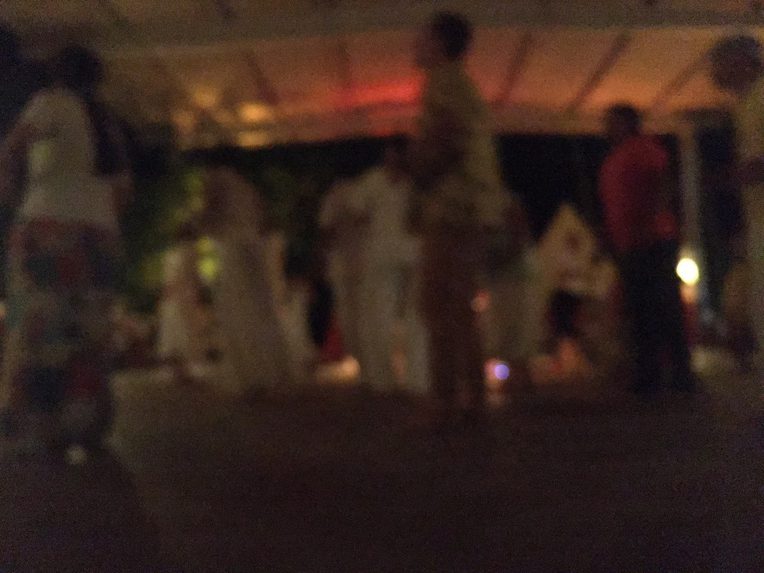(Psychedelics) Beyond the “Neuro”
From the Series: The Psychedelic Revival
From the Series: The Psychedelic Revival

Nadia stands between Sofia and Tânia mimicking a shaking fit as her friends create a space around her with their presence. The women are demonstrating the body work that is given during the ayahuasca ceremonies they facilitate. Hovering behind Nadia, hands held up towards her, Tânia goes on:
When the força1 comes into the physical body, the encounter of the different frequencies can be intense, and shaking often happens. Shaking is bom (good). We want to encourage it. You can move your hand over the person, you don’t even need to touch, because the body becomes so sensitive, it feels everything. This kind of movement [she gestures in a wave like movement from the floor up] can help the cleansing come.
Nadia doubles-up, exaggeratedly pretends to purge, and we all burst out laughing.
The work these women are facilitating is “muito no corpo” (“very in the body”), standing apart from what they joke is a very masculine obsession with the visionary, the cerebro
(brain) and an ethic of subduing the body within ayahuasca ceremonies. All three of them initially came into contact with ayahuasca within the União do Vegetal (UDV). UDV is one of three main ayahuasca religious groups that exist in Brazil. These vary in the degree that they discourage somatic expression during the experience.2
The women broke away from the UDV to form a neoayahuasqueiro group (Labate 2004). Labate coined this term specifically to describe new ayahuasca formations that draw on a range of cosmologies and practices, from Spiritism, Candomblé, neo-shamanism, and transpersonal psychology.3
Evoking their reasons for leaving the UDV, Sofia states: “Imagine being na força, I mean completely in the force, sitting in white plastic chairs under neon lights, dressed in white, men on one side, women on the other, having to be still, listening to all that talk, talk, talk and your body raging to move.” As a clinical psychologist and massage therapist trained in various trauma-healing modalities, she has studied the neuropharmacological work published on the therapeutic mechanisms of psychedelic experiences. Much of this, she feels, is misguided. “It’s based on outdated understandings of the brain and the central nervous system in which the brain is like in command of everything else. As if the heart or the lungs take orders from the brain!”
Working in more experiential and iterative therapeutic contexts, Sofia and her co-facilitators understand ayahuasca efficacy in markedly different terms. Their emphasis lies on the somatic, distributed, interpersonal, emetic, and beyond-the-human dimensions of ayahuasca experiences. Their work echoes with the promising avenues opened by Wilson (2015) who suggests we attend to the mind below the neck. Piera Talin and I (Talin and Sanabria 2017) explored some of these somatic-affective entanglements in our analysis of how people who have used ayahuasca to overcome substance dependence spoke of the importance of purging (see also Gearin and Fotiou 2019). Noting how the imbrication of the mental and enterological upends distinctions between gut and mood, we called attention to the way ayahuasca’s pharmacology, its rich semiotic worlds, and the thick relational fabric within which it is used produce a uniquely potent and deeply caring, situated efficacy (Talin and Sanabria 2017).


In what follows, I briefly map out some of the ways urban Brazilian neo-ayahuasca facilitators that I have been in conversation with invite us to rethink the traffic between minded states and the peripheral, breathing, moving, digesting body. Naiane, a core member of a group I have been conducting ethnographic research with spoke to the distinction between the somatic and the visionary by evoking the distinction between two key moments of the ayahuasca ritual. The first phase—in which the ayahuasca is served—often referred to as trabalho (work), is conducted with everyone seated, emphasizing introspection. At the end of the ritual, a roda de rapé (tobacco medicine circle) is opened by an outdoor fire, and the congas (drums) are brought out. It was during one such roda that Naiane first discovered her cabocla (female indigenous spirit who may manifest during Candomblé or Umbanda ceremonies). Suddenly Naiane, who was raised an Evangelist, began shaking uncontrollably. Manuel, who is initiated in Umbanda told her that she was channeling Jurema (the cabocla) because this was the cabocla’s rhythm being called on the drums and her body had clearly responded. “Throw yourself into the gira [dance] daughter," he urged her, "express her, make her your ally.” Naiane who is soft spoken and describes herself as shy says that since this wild dance with Jurema she has been attentive in new ways to her body, to its expressions, reading the embodied reactions of twittering, rage rising, or affects through the lens of this new being in her life. She speaks of this as building a relationship, letting her in, cultivating her presence in her life. Since her first encounter with her cabocla, Naiane has made radical changes in her life, speaking clearly about her spiritual path to her Evangelical family for example and asserting her difference, or opening her own therapeutic space thus transforming her professional life. The shift is not imputed to Jurema herself, or to a cognitive decision making informed by a vision, but rather to the way the cultivation of this energy in her life has led Naiana to be more ousada (daring) and affirmed.
Many urban Brazilian healers I have spoken with overtly repudiate the terms hallucinogenic or psychedelic to refer to ayahuasca in favor of the term enteogênico (entheogenic), thus marking the distinction between the neuro or visionary aspects of the brew and its embodied and somatic effects. This correction has to do with a range of factors stemming from legal questions or the association that “psychedelic” holds for some people with synthetic “drugs” like LSD or MDMA contra a plant medicine. Several people explicitly pointed to the fact that the term enteogênico points inward, to the experiential body in its sacred dimension, in contrast with the mind or psyche centered term psychedelic.
It has become utterly banal to state that psychedelic experiences are modulated by their “set and setting.” This is to say that the ritual framing of the experience is fundamental to its effect. In this sense my point here is not that ayahuasca “is” any one thing, but rather to point to how the settings in which some urban neo-ayahuasqueiro groups are actively (re)framing ayahuasca rituals are carving out a more embodied experience against previous settings that might enhance a more “neuro” one. In this sense, making it a more “bodily” experience is an explicit ritual choice. Here, the objective is to cultivate modes of attention and presence that locate the potentiality of the experience in and through bodies. This emphasis on embodiment—in its most visceral expression—is intended to counter-balance and undo, for the Western, urban publics attending such spaces, the dissociation between mind and body.
1. Lit. "force," used to refer to the ayahuasca experience.
2. In the Santo Daime, there are different ritual sequences such as concentração (concentration) in which immobility is encouraged, and bailados (dances) which are highly structured somatic experiences. Barquinha is a ritual form that oftentimes includes spirit possession and a highly structured form of somatic expression of the experience.
3. As such they form a relatively idiosyncratic subset of ayahuasca practices in the Brazilian landscape, I do not mean to intend that the position they have developed is representative of how urban Brazilian ayahusqeiros in general understand the medicine.
This research was made possible by generous support from the ERC Starting Grant n°757589 “HealingEncounters: Reinventing an indigenous medicine in the clinic and beyond” based at CERMES3 (Université de Paris, EHESS, CNRS).
Gearin, Alex K., and Evgenia Fotiou. 2019. "Purging and the Body in the Therapeutic Use of Ayahuasca." Social Science & Medicine 239. Online ahead of print, October.
Labate, Beatriz C. 2004. A Reinvenção do Uso da Ayahuasca nos Centros Urbanos. Campinas: Mercado de Letras.
Talin, Piera, and Emilia Sanabria. 2017. “Ayahuasca’s Entwined Efficacy: An Ethnographic Study of Ritual Healing from ‘Addiction.’” International Journal Drug Policy 44: 23–30.
Wilson, Elizabeth. 2015. Gut Feminism. Durham, N.C.: Duke University Press.